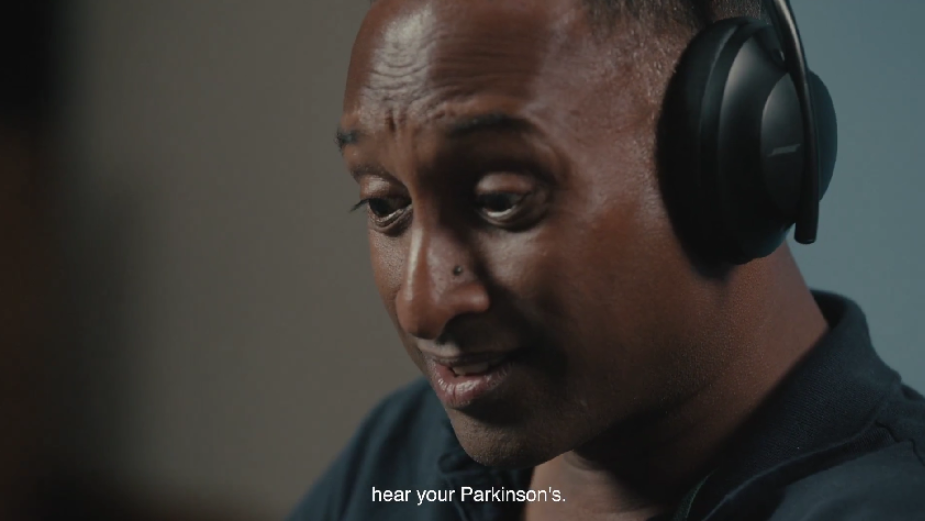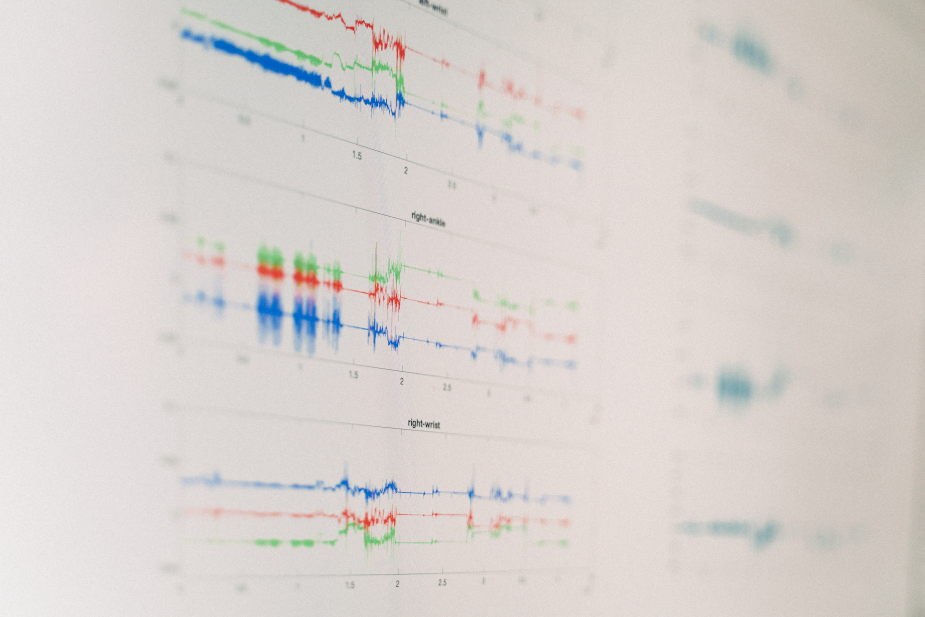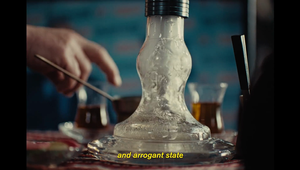
How UCL Turned Tremors Into Tunes for Parkinson’s Patients

“More than 10 million people worldwide are living with Parkinson’s, a number expected to double over the next 20 years.” This fact is what informed the 'Tremors vs. Tremors' project, turning Parkinson’s patients’ tremors into music which signifies their individualised journey with the disease.
Using tremor data collected from patients, the project was led by Dr. Christian Lambert, a neurologist who interviewed the individuals and analysed the data surrounding the project. The raw data of each participant’s tremor was captured and sent over to German music company DaHouse Audio, who interpreted this into songs which support Parkinson's UK with fundraising efforts. With each person’s tremor being unique to them, so too were the tracks created to fill the musical album.
To hear more, ahead of World Parkinson's Day on April 11th, Innocean Berlin’s creative directors José Filipe Gomes and Pedro Lourenço tell LBB’s Nisna Mahtani about bringing together the intersection of science and art within this project.
LBB> Launched during Brain Awareness Week, what was the starting point of the Tremors vs Tremors campaign?
José & Pedro> We kicked off the project by having Dr. Christian Lambert, principal investigator at University College London (UCL), appear on BBC Radio 4’s Today and ITV News to explain the idea and process behind the songs. In parallel, we launched the website - www.tremorsvstremors.com - and released the album on all major streaming platforms.
LBB> For those who may not know, what is Parkinson’s, and how does it impact people’s lives?
José & Pedro> Parkinson's is a chronic degenerative disorder that affects the nervous system and, consequentially, the parts of our body controlled by the nerves. The tremor is the most visible manifestation, but there are more than 40 symptoms that a person with Parkinson’s can experience, including stiffness, slowing of movement, anxiety, pain and sleep problems – which can have a significant impact on all aspects of daily life, and on the patient’s physical and mental health. The disease affects more than 10 million people worldwide, and because every individual experiences Parkinson’s differently, it’s extremely difficult to find a universal therapy or treatment that works for everyone.
LBB> Talk to us a little about the research that went into this campaign and when you initially realised that the music could support tremors.
José & Pedro> We know that music is incredibly powerful: it can cheer us up, calm us down, and positively impact the brain and how we feel. One thing we noticed in our research phase was that the Parkinson’s tremors plotted on a graph look remarkably similar to an audio spectrum. The combination of these two insights led to our initial hypothesis: could the tremors be converted into music and used to relieve Parkinson’s symptoms? In other words, could we use the condition against itself?

LBB> From there, what was the process of actually creating a track using the tremors of actual people suffering from Parkinson's?
José & Pedro> It was a long, exciting, and complex process that brought together art and science to create audio tracks that are genuinely bespoke to each participant. First, we used accelerometers to capture the tremors of five people with Parkinson’s: Clare, Steph, John, Kuhan, and Prakash. Then, our talented partners at DaHouse Audio used customised software to translate the tremor data of the participants into one-dimensional sine waves that affected the different instruments in each song. To make the music as personal as possible, we made sure that the lyrics and melodies of each song reflected each person’s life stories and musical preferences.
LBB> In terms of the people you collaborated with to make the tracks possible, how did you find the participants, and how did their story contribute to the creative process?
José & Pedro> The participants came through University College London. Most of them have collaborated with other research projects previously. They were absolutely crucial to how the songs and the project turned out. It’s not only that Parkinson’s is unique in the way it manifests, but also in the way each person deals with the condition individually. Some of the participants were still coping with accepting their diagnosis, while others struggled with non-motor symptoms such as anxiety and insomnia.
Their stories, personalities, and challenges were so unique, creating the base for the lyrics and the songs we composed. Each track is completely different and as unique as the participants themselves.
LBB> How long was the track-making process, and what was the most challenging part of bringing everything together?
José & Pedro> After we measured the participants’ tremors and got to know them a little bit better, it took us three to four months to have everything ready. We had to process all the data and convert the tremors into musical elements that we could use in each track to affect the instruments. Getting this right was probably the most challenging part of that process. We wanted the tremors to be an intrinsic, natural part of the songs, but we also wanted to give everything a positive feeling so that the songs would still be pleasant to listen to. Striking that balance was really important for us.

LBB> Combining science, creativity, and music is a wonderful way to make a meaningful impact. What was the collaborative process like, and can you talk us through it a little?
José & Pedro> It was a truly collaborative process in the sense that none of us (UCL, Innocean, DaHouse) would have been able to pull it off on our own. It was a team effort: scientists, doctors, musicians, producers, creatives – all working together.
When we first showed the idea to Dr. Lambert and his team, we weren’t sure if it would be possible or if it would have a positive impact. We were also not quite sure about how we would process this data and convert it to something that could be used as an audio element. But it was a very open and honest collaboration where everyone came together with their expertise to make it a reality. We still think we might have said some truly horrific things for a scientist to hear, but the team at UCL were incredible at making us feel included, even in the most scientific conversations. We felt a bit like Muggles next to Harry Potter, but it was an amazing experience.
LBB> In terms of the final product, not only did you raise awareness of the disease, but also, the participants had a positive reaction. How important was it to achieve both?
José & Pedro> Our primary objective was to provide the participants with something they could resort to where medicine falls short. One participant said many times that he felt his Parkinson’s came before him as a person. So, we wanted to cast a light on the individual – the person behind the condition. People with Parkinson’s are also people with emotions, feelings, hopes, and stories. These songs and this project are not about curing Parkinson’s or making it go away. They are about giving these participants a tool that helps them in a very unique, individual way in their daily, constant, and increasing struggle with Parkinson’s.
Of course, while doing that, the other side of things also came through. Each story is so true and so powerful, and listening to a tremor in the form of music is a new experience. So, it naturally raised awareness and resonated with a broader audience. Ultimately, it helped everyone realise that Parkinson’s is not all about tremors. Other, often more debilitating, symptoms affect each person differently.
LBB> When it came to the reactions, what were some of the most striking or impactful things the participants said and how will that carry on to lead the way for more research?
José & Pedro> We were blown away by the reactions. We always hoped that the ‘Tremors vs. Tremors’ project would impact the participants, but it was incredible to see and hear firsthand their take on the songs. Prakash, for instance, said he’d listen to his song as often as possible to calm his symptoms. Clare, who had the habit of grabbing her hand to hide the tremor, finally accepted her condition and declared she no longer felt like she needed to hide her Parkinson’s. Kuhan confessed at the launch event that he uses his song daily to alleviate all his symptoms, both motor and non-motor.
We hope these reactions inspire other researchers. We even heard from other doctors and neuroscientists about how important they think this project can be in bringing new and more holistic approaches to the forefront of Parkinson’s research and treatment. This means that, in the future, a doctor might prescribe music as part of the therapy for Parkinson’s and other conditions.

LBB> With the wider audience, how have they been reacting so far?
José & Pedro> This project has been receiving a lot of love, not just from the Parkinson’s community but also from the general public. We’re incredibly grateful for all the messages we’ve received since the launch. People love the songs, and they really like the fact that we’re not just raising awareness but actually trying to do something for the patients.
We all probably know someone who has Parkinson’s in the family, and we know how hard and debilitating this condition can be, especially when there’s no cure on the horizon. When you create something so personalised that it establishes an emotional connection with the patient and helps alleviate their symptoms, it really strikes a chord.
LBB> For you, what was the most rewarding part of the process?
José & Pedro> The most rewarding part was hearing from the patients that this project made them feel seen and validated, that it helped them deal with their struggles and be more open about their condition, and that they listened to their songs to alleviate their symptoms. It makes you feel like you’ve created something extraordinary.













